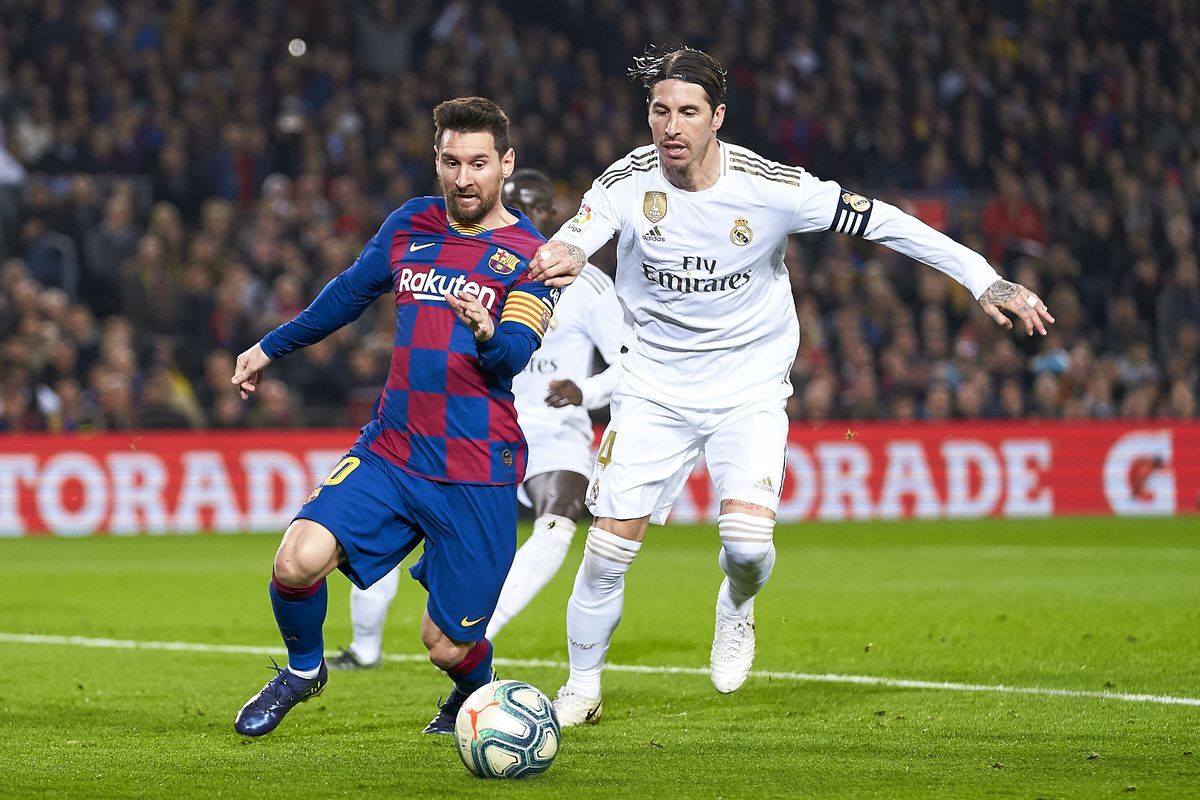
Carlo Ancelotti’s Unique Tactics in El Clasico
Carlo Ancelotti, a name synonymous with footballing success, is one of the most respected and experienced managers in world football. His tactical approach to managing Real Madrid, particularly in high-stakes encounters such as El Clasico, has earned him a reputation for being both pragmatic and innovative. Known for his calm demeanor, Ancelotti has a unique ability to navigate the most intense situations, and his approach in El Clasico is no exception.
El Clasico, the famous rivalry between Real Madrid and Barcelona, is more than just a football match—it is a battle of ideologies, legacies, and pride. With both teams boasting rich histories and passionate fanbases, the tactical battle between the managers often plays a pivotal role in determining the outcome. In this article, we will dive into the unique tactical approaches Carlo Ancelotti employs in El Clasico, how his strategies have evolved over time, and what makes his approach so effective in one of football’s most fiercely contested matches.
1. The Calm and Calculated Nature of Ancelotti's Tactics
One of the most striking features of Carlo Ancelotti’s management style is his calm, calculated approach to high-pressure situations. Unlike some managers who thrive on emotional intensity, Ancelotti tends to remain composed, even in the heat of a match. This laid-back demeanor allows him to make clear-headed decisions and devise strategies that are based on sound analysis rather than knee-jerk reactions.
In El Clasico, where emotions often run high, this calmness is essential. Ancelotti’s ability to keep his team focused and perform under pressure has been a key factor in Real Madrid’s success in this fixture. Whether it’s a crucial last-minute decision or a tactical adjustment during the match, Ancelotti’s calmness provides stability and helps Real Madrid remain resilient, no matter how tense the game becomes.
2. Ancelotti’s Flexibility: Adapting Tactics to Opponent's Strengths
A hallmark of Ancelotti’s managerial philosophy is his flexibility. He is not married to a particular formation or style of play, but instead adapts his tactics based on the strengths and weaknesses of his team and the opponent. This adaptability is especially evident in his approach to El Clasico.
When facing Barcelona, Ancelotti knows that controlling possession and pressing high up the pitch is essential to neutralizing Barcelona’s fluid attacking play. However, he also recognizes that Real Madrid cannot afford to play an open, attacking style against Barcelona’s potent counter-attacks. Therefore, Ancelotti typically adopts a more pragmatic approach, ensuring that Real Madrid remains defensively solid while still maintaining the ability to exploit Barcelona’s defensive vulnerabilities.
For example, in previous El Clasico matches, Ancelotti has employed a balanced 4-3-3 formation, with two solid defensive midfielders providing cover for the backline while also allowing for creative players like Luka Modrić and Toni Kroos to control the game in the middle of the park. This formation allows Real Madrid to transition quickly from defense to attack, while also maintaining the necessary structure to deal with Barcelona’s fast counter-attacks.
3. The Importance of the Midfield Battle in Ancelotti’s Strategy
The midfield is often the key battleground in any El Clasico, and Ancelotti understands the importance of controlling this area. In past encounters, Ancelotti has instructed his midfielders to not only dictate the tempo of the game but also to provide defensive support and shield the defense. The midfield is where both teams’ strategies are shaped, and controlling it gives the team an edge in both attack and defense.
In Real Madrid’s case, Ancelotti often deploys a combination of experienced midfielders like Toni Kroos and Luka Modrić, alongside dynamic players like Casemiro (when he was part of the squad) and Federico Valverde. This midfield setup allows for both creativity and defensive solidity. The combination of Modrić’s vision, Kroos’s passing range, and Valverde’s energy provides Real Madrid with the necessary balance to compete with Barcelona’s midfield maestros.
Furthermore, Ancelotti often asks his midfielders to press high when Barcelona is in possession, cutting off passing lanes and forcing the opposition into mistakes. This high press is a key part of Real Madrid’s strategy to disrupt Barcelona’s build-up play, especially considering the speed at which Barcelona can transition the ball through their midfield.
4. Utilizing Wide Players for Counter-Attacking Threats
One of the defining features of Ancelotti’s approach to El Clasico is his use of wide players to create space and exploit Barcelona’s defensive weaknesses. In previous El Clasico encounters, Ancelotti has been able to exploit the pace and skill of players like Vinícius Júnior and Rodrygo Goes on the wings. These players are given the freedom to run at Barcelona’s defenders, making runs in behind the defense and creating opportunities on the counter-attack.
Ancelotti is also known for encouraging his wide players to cut inside, thereby stretching the opposition’s defense and creating space for other attacking players. This fluidity in attacking play makes Real Madrid unpredictable and dangerous on the break, as Barcelona’s defenders are forced to stay alert to the threat posed by Real Madrid’s dynamic wingers.
In El Clasico 2025, expect Ancelotti to once again utilize the pace and creativity of his wide players to hurt Barcelona’s defensive structure, particularly in transition when Barcelona’s full-backs are caught upfield.
5. The Role of Experienced Leaders in El Clasico
Ancelotti has always placed great importance on leadership and experience within his teams, and this is particularly evident in El Clasico. The presence of experienced players like Karim Benzema, Sergio Ramos (when he was at the club), and Luka Modrić is invaluable in high-pressure situations like El Clasico.
Ancelotti relies on these players to guide the younger members of the squad and maintain focus during crucial moments. In a game as emotionally charged as El Clasico, leadership both on and off the pitch is vital to ensuring that the team remains composed. Ancelotti often leans on the experienced heads in his team to make crucial decisions and to keep the team grounded during moments of adversity.
Benzema, for example, has been a key figure in recent El Clasico matches, not only scoring crucial goals but also providing leadership in attack. His ability to link up play and create chances for others makes him an indispensable part of Ancelotti’s plans for the match.
6. Ancelotti's Approach to Set-Pieces in El Clasico
Set-pieces are often a game-changer in El Clasico, and Ancelotti places great emphasis on making the most of these situations. Real Madrid’s set-piece strategies are well-coached, with players like Toni Kroos and Luka Modrić capable of delivering precise balls into the box. The team’s aerial threat, led by players like Antonio Rüdiger and David Alaba, is a key component of their set-piece strategy.
Ancelotti often instructs his players to be clinical during set-piece situations, especially given the high stakes of El Clasico. Whether it’s a corner, free-kick, or long throw-in, Real Madrid aims to capitalize on every opportunity to put pressure on Barcelona’s defense. Ancelotti’s tactical nous ensures that his team remains a constant threat from set-pieces, adding another layer to their already formidable attacking game.
As the tactical battle between Carlo Ancelotti and Barcelona’s manager continues to unfold, fans can stay connected with the latest news, match updates, and insights into El Clasico by visiting SPADE66. Whether you’re cheering for Real Madrid or Barcelona, offers all the information you need to keep up with your favorite team’s journey.
Conclusion
Carlo Ancelotti’s approach to managing Real Madrid in El Clasico is one of careful calculation, tactical flexibility, and an emphasis on control in the key areas of the pitch. His ability to adapt to the strengths and weaknesses of his opponents, combined with his calm demeanor, makes him one of the most effective managers in this rivalry. As we look ahead to El Clasico 2025, Ancelotti’s tactics will once again play a crucial role in determining the outcome of this iconic clash. Fans from all over the world will be eagerly watching as Real Madrid takes on Barcelona in what promises to be another thrilling chapter in the El Clasico saga.

0 Comments
Post Comment